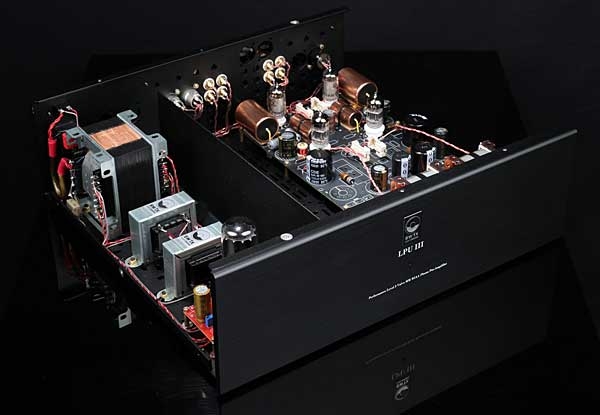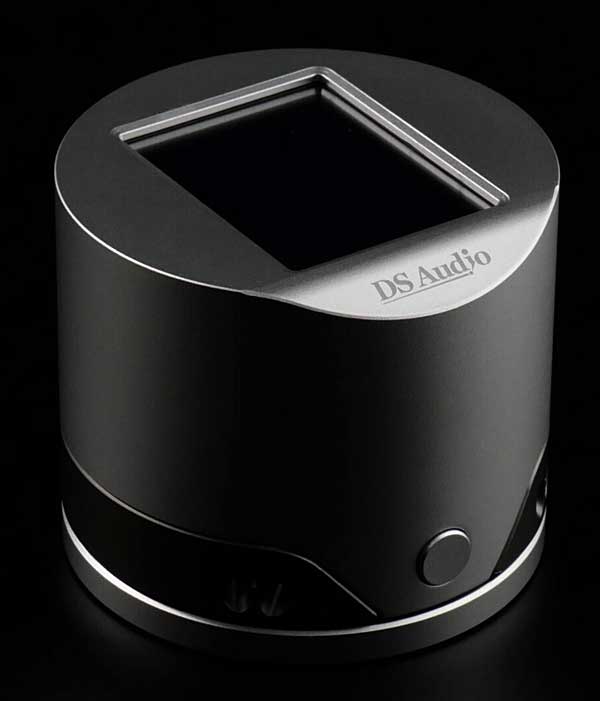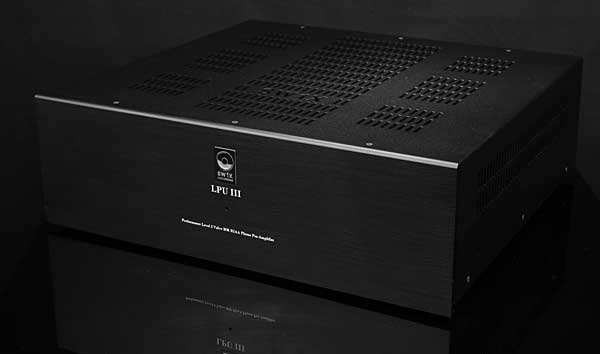| Columns Retired Columns & Blogs |
I use quality medical-grade hemostats and tweezers for working on the TT arm and cartridge.

I recommend the toothpick fix. If the pin is too big for the clip, insert a round toothpick into the clip to expand it. If the pin is too small, insert the toothpick and then squeeze the clip gently with pliers. If the connection is still too loose, use those pliers again to give it another gentle squeeze.
It really would be nice if the clip people and the pin people would get together and work this all out, don't you think? There are a few nicely made "spring" clips that expand as needed and grip well, but there aren't enough of them out there.
Some standards seem like a good idea but probably aren't. It might be tempting to standardize the distance between the cartridge fixing screws and the stylus tip. That way, every cartridge installed in a particular arm would result in the correct effective length—hence the correct overhang. Standardizing that, though, would require standardizing cantilever lengths, which would limit cartridge-design innovation—not good. Anyway, that's what headshell slots are for (footnote 1).
If you own a Lyra cartridge, perhaps you've noticed a tiny hole near the front of the cartridge's top plate. That's an innovation Allen Perkins devised many years ago when his company Immedia imported Lyra cartridges to America. Perkins added a similar hole to his arm's headshell that lines up with its effective length, so that if the two small holes line up—the one on the headshell and the one on the cartridge—then "overhang" will be set correctly. This makes setting overhang easy with a Lyra cartridge: Place a very small Allen key, a wire, a paperclip, or anything that fits snugly through the headshell hole, and adjust the cartridge until the Allen key (or whatever you used) slips into the tiny hole in the top of the cartridge. Tighten the screws, and you've nominally set overhang for whichever alignment Perkins chose to implement.
I write "nominally" because if the cartridge's stylus rake angle is way off, it will affect the stylus position, as WAM Engineering's J.R. Boisclair has observed in his cartridge inspections. Even so, you're now close, and quickly, so this was a worthwhile innovation. Perkins hoped his free innovation would be adopted by other arm and cartridge manufacturers, but unfortunately that never happened. It's not too late! At least Lyra still adds the hole (footnote 2).
What else? The industry really needs to standardize ground lugs on phono preamplifiers and tonearm grounding cables so that they are 100% compatible. A good start would be to mandate ground-wire lugs that are banana plug–compliant, so you (or, better, manufacturers of tonearm cables) could solder a banana plug to the end of the ground wire so that you don't have to unscrew a binding post and wrap a wire around it and then tighten it, or, worse, try to cinch down a screw onto a tiny spade lug that's too small to fit over the post's larger diameter. Ground wires could be terminated with a socket into which various diameter spade connectors could be click-fitted. Or—here's an idea—one or more of the cable companies should come up with an accessory kit so you could cut the end of your ground wire, connect a socket, then use the appropriate spade lug. Better still, have a Zoom meeting and decide on a standard; I like bananas. Meanwhile, on Amazon, for around $6 a set, you can order 10 alligator clip–terminated wires, a good workaround for the ground wire/lug incompatibility problem.
There needs to be a standard, or maybe a stricter standard, for center-hole placement/groove eccentricity in vinyl record pressing. Too many records these days are pressed eccentrically, which produces audible wow. We spend a great deal of money to get speed-stable turntable performance, only to have it messed up by record eccentricity. Remember Nakamichi's Dragon-CT Computing turntable? It measured and automatically corrected eccentricity, but since then no one has.

As I was writing this column, an email came in from a friend alerting me to a new device, the DS Audio ES-001 Eccentricity Detection Stabilizer, which can fix this problem if you are willing to expand the spindle hole (footnote 3). This product will be debuted at Munich High End, which is next week as I write this. I'll be reviewing it and happily disfiguring some wow-y records. Next, someone should invent something to refill the hole once the center is moved.
This isn't about standards exactly, or maybe it is: But could we please achieve some kind of consensus on the best approach to ultrasonic record cleaning? There are many conflicting opinions as to the most appropriate cavitation frequency—35kHz? 120kHz?—and power: 200W? 300W? There's a right answer. What direction should the cavitation generators face, relative to the records? How far apart can the records be spaced in cleaners that hold several? Is it necessary to add a surfactant to break up the surface tension? And how can I be sure my cleaner is really cavitating?
Charles Kirmuss, a man of a thousand wild claims, many (not all) of which I think are true, uses the aluminum foil test to demonstrate not only that his machine cavitates as promised but that most of the others do not. I've reviewed supposedly cavitation-based cleaners that do not pass the aluminum foil test, but the visual and sonic results make clear that these machines clean more effectively than any vacuum machine. They leave the record with a shine that goes well beyond the "bubbler wet/wash" Mr. Kirmuss claims these machines are. Is it possible that these other machines just cavitate more gently?
I'd love to moderate a panel with all of the cavitation manufacturers with an ultrasound science expert on hand to clear up the confusion, misinformation, and bullshit.
While I'm on my high horse, I'd also like to address the sloppy, imprecise way that cueing mechanisms attach to armrest platforms—usually with a single grub screw. Loosen it, and if you are not careful, the mechanism falls through the opening—which makes adjusting it more difficult and stressful than it needs to be, and sometimes that single grub screw locks the cylinder in at an angle. Two grub screws would be better—but why can't we have this on a mini worm gear kind of drive, similar to what Kuzma uses for its armtube's rotating azimuth adjustment?
The SW1X LPU III Balanced Moving Magnet Phono Preamplifier
A year ago, in Analog Corner #310, I reviewed the SW1X Audio Design LPU I MM phono preamplifier, which is available in a variety of iterations. At the time, the version I was sent for review sold for $4195. Few moving magnet cartridge users spend that much for a phono preamp, but I found that mating it with a good step-up transformer produced "classic tube sound" in the best sense of the phrase, and that behind that was quiet. I concluded with, "Please, Dr. Roschkow, produce a mono version, ideally with multiple EQ curves. Meanwhile, the LPU I is a great, cost-effective way to go, even in the costliest of systems."

So when I was offered for review the bigger, more costly SW1X LPU III, I bit. Like the LPU I, the LPU III is available in a standard edition or with several extra-cost upgrades. I was sent the LPU III Balanced edition ($12,125, footnote 4).
The "Standard" and "Special" versions share the same pure class-A, zero-negative-feedback, single-ended circuit: An input pair of EF86 pentodes drives an active RIAA equalization network (sans series resistors), with an output stage consisting of a pair of triode-connected pentodes. The circuit features Audio Note copper foil, Mylar-in-oil signal output and decoupling capacitors, and 5U4GB choke-filtered tube rectification and a copper, flux-banded mains transformer and choke.
Footnote 2: Except in the Etna, apparently.
Footnote 3: See ds-audio-w.biz/products/563.
Footnote 4: SW1X Audio Design, Clartes Ltd., 10 Feering Rd., Coggeshall, Essex CO6 1RN, United Kingdom. Tel: +44 (0)13 7656 2402. Web: sw1xad.co.uk. SW1X is distributed in the US by the Lotus Group Tel: (415) 897-8884; Web: lotusgroupusa.com and by Jorge Sadurni, Sadurni Acoustics, Tel: (512) 400-8632; Web: sadurniacoustics.com.

I use quality medical-grade hemostats and tweezers for working on the TT arm and cartridge.

The ever affable Wally Malewicz many yeas ago gifted me with a lovely little set of assembly pliers that he had expertly modified just to deal with phono cartridge pins and clips. JR at WAM Engineering might need to offer these for sale!

Hi
Why using pentodes for phonostage instead of triodes which are far more quieter than pentodes ! Low noise is crucial for phonostage when the cartridge output signals is soooo low ! Besides, triodes are truly LINEAR while pentodes are not !
Trioded pentodes indeed reduces the gain of the phonostage, but pentode noise is still the issue.
Listening is believing
Jack L

Michael,
Decades ago when I was in College we talked about balanced vs un-balanced. Transformers outputs (unless one side grounded) are always balanced. Heck the original specification as I read it in the Peerless/Altec app note said that balanced connection had no connection to ground. So the need to ground the center tap to make a balanced connection is not really required. For that matter that probably means any solid state or tube direct out that is balanced probably is incorrect. The whole idea of using a balanced non-grounded setup was that the output could float to the receiving sides ground and therefore reduce the DC voltage between the two units. Most Pro tube stuff I design do have a center tap and I include a switch for ground, cap coupled ground or float the secondary.
Thanks,
Gordon

Hi
Yes, "direct out" is single-out, unbalanced.
To get differential-out or balanced out, an isolation audio transformer is neeed to convert the single-ended unbalanced ouput signals to differential balanced output signals.
Centre-tapping of the transformer is not needed as long as the grounding wire of the sending component is connected to the ground wire of the receiving end.
Jack L

How come Mike's speaker types have been MIA in the "Associated Equipment" in recent reviews [ie. Gryphon Amp]?

How come Mike's speaker types have been MIA in the "Associated Equipment" in recent reviews [ie. Gryphon Amp]?
The speakers are listed in the on-line reprints of his reviews. For example, see www.stereophile.com/content/gryphon-commander-line-preamplifier-associated-equipment.
John Atkinson
Technical Editor, Stereophile

You are, of course, correct - but why not in the actual print magazine that I subscribe to?
I know—ending a sentence with a preposition and all!